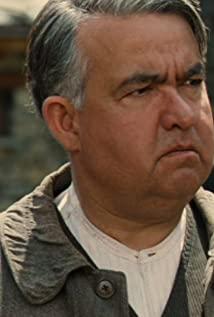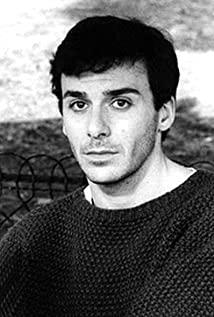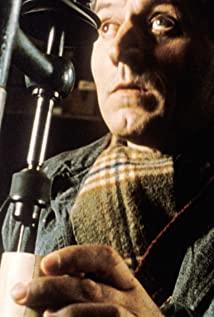Gothic style, full of treacherousness, depression, suffering and despair. The beginning is a dark city and dense buildings with no breathing space. With the perspective of pigeons, we have witnessed countless people who chose to end their lives in this small city dominated by gray. Screaming, stiff, terrifying... The soundtrack always has a sense of dislocation where it makes fun of tragedies. The grotesqueness of singing and dancing vividly expresses the contradictory and distorted psychology of the characters. The dazzling array of suicide tools and ways to die is eye-opening. The morbid image, behavior, psychology, and camera language of a Suicide Shop are all delicately portrayed. This family buys and sells death as a commodity, but forgets the meaning of life and death, happiness and sadness. For them, people who seek death are like items on an assembly line, providing them with the value of benefits and the meaning of survival, just like they open this store just to inherit, not to understand life and death through self-thinking. Meaning for those on the brink of despair. And this long-term negativity and darkness also filled their hearts unknowingly. Alan's birth began to shatter their long-held perceptions of life and death, allowing them to realize that the opposite of death is survival and happiness. At first they cannot accept perceptions that contradict their thinking. Because of their fixed thinking and the subconscious that has long lived in negativity, they view life in the most indifferent way and support death. Even their children, when they doubt their behavior, persist in changing their perceptions, forcing them to watch others commit suicide, depriving them of their enthusiasm and love for life, and turning them into frowning, indifferent, rigid machines.
Maybe it's because they never really faced death up close. Selling tools to guests for suicide, but never watching their deaths up close, perhaps escaping. The turning point of the matter happened when the father personally saw the guest commit suicide. He had no intention of breaking into his memory and learned about the warmth and warmth he once had. It happened when her mother was asked by a guest how she would choose to commit suicide, and after she seemed to deny it unequivocally, she began to think that her long-term unhappiness had not been faced, and her emotions had not been satisfied. Just relying on a tradition, she did it like this Kill someone else's accomplice. She has never faced her own, her husband, and children's true emotional and life demands. Their family is mentally ill, and they have to help others get rid of their pain. They pretended to be easy to describe the pleasure of death to their customers. They didn't seem to be mixed with any sympathy and understanding, but their hearts were filled with guilt, guilt, doubt and gloom for a long time.
The structure of the film is well-structured. For people who commit suicide, different degrees of footage are given. Some focus on their indecision before committing suicide, some magnify their pain at the time of suicide, and some set off their despair and misfortune during their lifetime. And the suicidal who brought the protagonist's psychological changes gave sufficient psychological contradictions and the protagonist's behavior reflection. Like a person who is alone with his old age lying in bed, wandering in a suicide shop, asking his mother's attitude, standing on a bridge, with fear of death and survival instinct but finally determined to jump people who go down.
And it was him who became another turning point in the story. It allows the audience to begin to see the understanding of death and the hope of life from the heavy depression and absurdity of the previous plots. When the river jumper threw the heavy object down and gritted his teeth and waited for death, he found that he was not dead, and the heavy object on his leg had already been cut off by Alan beside him. This scene is similar to the pistol in neutral in "White". And after they thought they would die but unexpectedly did not die, they had already experienced the fear of death, the heavy weight, and the feeling of being pulled back from the god of death.
Maybe this is the worst thing for many people who commit suicide. When they find that the fear of death is far less terrifying and hopeless than the continuation of life, will they still want to choose suicide? Or, when they regret it, they have already No regrets to speak of.
Maybe a lot of people really haven't reached the point where they really want to die. They are just struggling and feel hopeless. They choose to buy the most lethal suicide tool, perhaps just to escape the last blow, to escape the philosophical issues that they don’t want to think about life and death, forcing themselves not to leave a way for themselves, choosing the easiest, The fastest way.
But many people also underestimate their own tolerance and understanding of death. If you haven't experienced the life that death is about to get away with, how can you tear open your own skin and think about the final answer about death and life?
So Alan, who had witnessed too many deaths, gave his sister a silk scarf, thinking she was the most beautiful. And the elder sister, who lived in an environment where she was controlled, suppressed, and deprived of her right to think about life and death for a long time, untied all her burdens in one night. , and the dust clothes that hide the mask of her true self in the daytime, with all her imagination, immersed in the dance of ecstasy, her self-consciousness begins to awaken, and her desire for life is about to emerge. However, this period of survival contrasts with the process of the poor people on the street suffocating themselves with plastic bags and struggling. This choice and contrast is both hopeless and hopeless.
After Allen destroyed the entire suicide shop, the mother's initial loss and the daughter's heartfelt smile after finally breaking out of the last cage that imprisoned her soul made them liberated in surprise.
The angry father was reluctant to face the last piece of his injustice that was destroyed, but he didn't think about it, and he was so embarrassed that he swung his knife to kill the initiator of all this: his own son. And his son used the same method to reverse his already twisted and broken heart: the suicide that he knew best, admired the most and survived.
Fortunately, it was just a fake death, but in an instant, my father understood the feeling of surviving in desperation of death, and realized that the suicide he had long admired did not make those suffering people feel the hope of their own life, and he could finally. Face up to the behavior of self-accomplices, and choose to give up this extreme way to take care of the family's emotions.
The return of the dead soul at the end is also a highlight. Let the dead describe his psychology of life and death, so that they can be more accompanied and understood.
The soul of the other pigeon flew away with the raw pigeon, but this time in the living Paris, not in the stagnant waters of despair.
If you don't know life, how can you know death? Like the ending, Dad still sells crepes with cyanide to customers who don't succeed in their first suicide. I think he thinks that since he has already experienced the critical point between death and survival and still chooses to die, he probably really thinks that death is the most suitable path for him. And this kind of bravery and heroism that really goes towards death may be the philosophy he has understood along the way: reverence for every life that chooses to be responsible for himself.
I hope everyone who wants to commit suicide can find a reason to live.
It also overcomes the desire for death with the instinct of life.
View more about The Suicide Shop reviews











